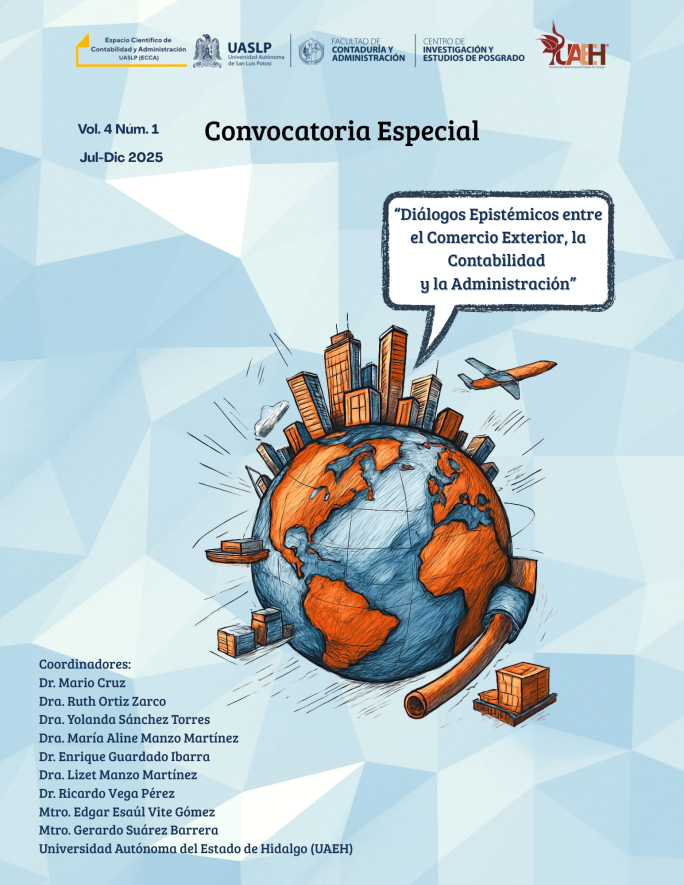Identity Under Construction: The Role of Nicknames in Youth Marketing as a Basis for Public Policy Development
DOI:
https://doi.org/10.58493/ecca.2025.3.2.10Keywords:
Youth identity, Nicknames in youth marketing, Public policy generation, Social belonging, Brand loyalty.Abstract
Today's youth are in a continuous process of identity formation, where nicknames play a crucial role. This research analyzed how these nicknames, in addition to acting as social labels, are effective tools for brands seeking to connect with young audiences. By studying advertising campaigns and their impact on social media, it was evident that they reflect the essence of groups, their values, and aspirations, affecting brand perception and consumer behavior. Companies that understand this relationship can develop more authentic strategies that leverage the emotional connection generated, thereby increasing cultural relevance and fostering consumer identity, as well as serving as a basis for the generation of public policies. The study was conducted using a quantitative approach, administering questionnaires to 1,355 young people between the ages of 18 and 30, concluding that nicknames function as tools for inclusion and differentiation within groups.
References
Aaker, J. L. (1997). Dimensions of brand personality. Journal of Marketing Research, 34(3), 347-356. https://doi.org/10.2307/3151897.
Atalaya Gestión Cultural – UCA. (2023, April 1). 1.2 Políticas Sociales – Atalaya Gestión Cultural – UCA. Atalaya Gestión Cultural. https://atalayagestioncultural.uca.es/1-2-politicas-sociales/.
Bennett, L., & Segerberg, A. (2012). The logic of connective action: Digital media and the personalization of contentious politics. Information, Communication & Society, 15(5), 739-768. https://doi.org/10.1080/1369118X.2012.670661.
Bolaños, D. F., & Pereira, M. R. (2019). Sustitución de nombre, uso cínico del lenguaje y constitución de subjetividad en adolescentes. Tempo picanal.
Bourdieu, P. (1984). Distinction: A social critique of the judgement of taste. Harvard University Press.
Cadavid-Giraldo, A. M. (2012). Políticas públicas de cultura: un rasgo de la relación entre Estado y sociedad. Revista Facultad de Ciencias Económicas: Investigación y Reflexión, 20(1), 143-166.
Cárdenas Maragaño, B. (2020). Los apodos: individualizadores conceptuados. Alpha, 41, 159-176. https://www.scielo.cl/pdf/alpha/n41/art_12.pdf.
Cárdenas Maragaño, B. (2015). Los apodos: individualizadores conceptuados. Onomázein, (32), 215-232.
Cejudo, G. M., & Michel, C. L. (2017). Coherencia y políticas públicas: Metas, instrumentos y poblaciones. Gestión y Políticas Públicas, 26(1), 3-36. https://doi.org/10.29265/gypp.v26i1.482.
Congreso de la República del Perú. (n.d.). Políticas públicas para la inclusión social de la población afrodesendiente. https://www2.congreso.gob.pe/sicr/cendocbib/con4_uibd.nsf/E2F3D37A829F75D105257BA3005EB971/$FILE/cartilla_politicas.pdf
Gau, G. (2015). Efectos psicológicos de los sobrenombres (apodos) en la etapa escolar: Un enfoque cualitativo. Revista Humanismo y Cambio Social, 6(3), 19-27. https://dialnet.unirioja.es/descarga/articulo/9113450.pdf.
Gau, G. G. (2015). Efectos psicológicos de los sobrenombres (apodos) en la etapa escolar: Un análisis fenomenológico. Revista Humanismo y Cambio Social, 63, 19-27.
Geertz, C. (1972). Identidad cultural y política.
Gilmore, J. H. & Pine, B. J. (2007). Authenticity: What consumers really want. Harvard Business Review Press.
González, M. (2021). Reconocimiento identitario del sobrenombre como cultura popular: Un estudio etnográfico. Revista Cubana de Ciencias Sociales, 12(2), 45-60. https://www.researchgate.net/publication/353721040_Apodos_como_nominacion_Identificacion_y_constitucion_de_subjetividad_en_la_adolescencia.
González, M. E. (2010). Los apodos en el léxico del adolescente venezolano. Letras, 52(83), 133-172.
Erikson, E. H. (1968). Identity: Youth and crisis. W. W. Norton & Company.
Gobierno de la Ciudad de México. (n.d.) Derecho a la Igualdad e Inclusión – Quinto Informe de Gobierno. Informe de Gobierno.
Holt, D. B. (2002). Why do brands cause trouble? A dialectical theory of consumer culture and branding. Journal of Consumer Research, 29(1), 70-90.
Hogg, M. A., & Abrams, D. (1988). Social identity theory: Social categorization in context. In Social identity theory: Constructive and critical advances (pp. 1-20). Harvester Wheatsheaf.
Hogg, M. A., & Abrams, D. (1988). Social Identifications: A Social Psychology of Intergroup Relations and Group Processes. Routledge.
Holt, D. B. (2002). Why do brands cause trouble? A dialectical theory of consumer culture and branding. Journal of Consumer Research, 29(1), 70-90.
Keller, K. L. (2001) Building customer based brand equity. Marketing Management, 10(2), 14-19.
Keller, K. L. (2001). Strategic Brand Management: Building, Measuring, and Managing Brand Equity. Prentice Hall.
Lemon Digital. (2025). El impactante dilema del “Nickname Branding” en el marketing moderno. Lemon. https://lemon.digital/el-impactante-dilema-del-nickname-branding-en-el-marketing-moderno/.
Marcia, J. E. (1980). Identity in adolescence. In J. Adelson (Ed.), Handbook of adolescent psychology (pp. 159-187). Wiley.
Reyes, J. P. (2014). El apodo sociopolítico en Latinoamérica. Contextos, (32), 91-106.
Schiffman, L. G., & Kamuk, L. L. (2010). Consumer behavior (10th ed.). Pearson.
Schwartz, S. J., Zamboanga, B. L., & Wang, S. C. (2007). Examining the identity status model in a diverse sample of college students. Journal of Adolescence, 30(3), 435-451. https://doi.org/10.1016/j.adolescence.2006.06.001.
Tajfel, H., & Turner, J. C. (1986). The social identity theory of intergroup behavior. In S. Worchel & W. G. Austin (Eds), Psychology of intergroup relations (pp. 7-24). Nelson-Hall.
Thompson, G. M., & Haytko, D. L. (1997). Speaking of fashion: Consumers´ emotional responses to fashion articles. Journal of Consumer Research, 24(4), 347-363.
Universidad de Burgos. Servicio de Publicaciones e Imagen Institucional. (2021). Social inclusion in cultural participation: a systematic review. https://riubu.ubu.es/handle/10259/9173?locale-attribute=en.

Downloads
Published
Issue
Section
License
Copyright (c) 2025 Blanca Isabel Llamas Félix, José Ricardo López Robles, Jonatan Alexis De la Torre Llamas

This work is licensed under a Creative Commons Attribution-NonCommercial-ShareAlike 4.0 International License.
Usted es libre de:
- Compartir — copiar y redistribuir el material en cualquier medio o formato
- Adaptar — remezclar, transformar y construir a partir del material
- La licenciante no puede revocar estas libertades en tanto usted siga los términos de la licencia
Bajo los siguientes términos:
- Atribución — Usted debe dar crédito de manera adecuada , brindar un enlace a la licencia, e indicar si se han realizado cambios . Puede hacerlo en cualquier forma razonable, pero no de forma tal que sugiera que usted o su uso tienen el apoyo de la licenciante.
- NoComercial — Usted no puede hacer uso del material con propósitos comerciales .
- CompartirIgual — Si remezcla, transforma o crea a partir del material, debe distribuir su contribución bajo la la misma licencia del original.
- No hay restricciones adicionales — No puede aplicar términos legales ni medidas tecnológicas que restrinjan legalmente a otras a hacer cualquier uso permitido por la licencia.












